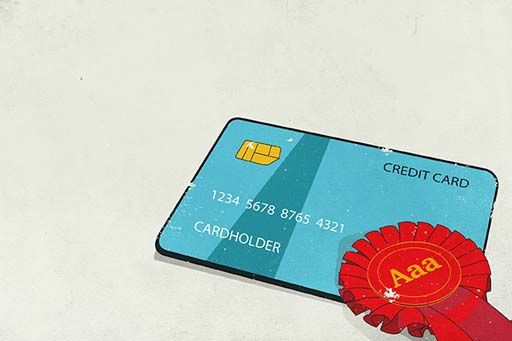4.2.3 Individual interest rates
You saw earlier that the Bank of England determines the official interest rate. Yet this is not the interest rate that will be charged to individuals taking out different types of debt. Lenders will tend to take into account a number of factors when setting the rates for a particular individual.
One of the reasons for charging interest has been the need for lenders to have a return for taking the risk associated with not getting their money back. Customarily, the basic principle here would be that the greater the estimated risk of loss, the greater the interest charged. This means that ‘higher risk’ borrowers may be charged more interest than those who are deemed ‘lower risk’. In a similar vein, interest charges will vary according to the security offered to the lenders by the borrowers.
This brings us to the distinction between secured and unsecured debt. Secured debt is money that is borrowed against an asset such as a home. If the debtor fails to make adequate repayments the lender has the right to recoup the money it has lent by selling the asset. By contrast, unsecured debt is not backed by any specified asset. For these reasons secured debts will, other things being equal, usually have a lower interest rate than unsecured debts.
Another factor that may affect interest rates is the size of the loan. Sometimes, larger loans will attract lower interest rates than smaller loans. The extent of competition between lenders will also be a factor. Typically, the greater the competition between lenders, the lower the interest rate you would expect them to charge.
One question that arises from this is whether such factors can explain the different interest rates charged, especially the higher rates often charged to people on much lower incomes. A Citizens Advice Bureau survey, for instance, found that APRs charged to clients with debts owed to money lenders and home-collected credit providers ranged from 25% to a staggering 360%, while interest rates charged on mainstream credit card debts ranged from 9.9% to 25.4% and on bank loans from 8% to 32.9% (Citizens Advice, 2003).
For many on low incomes, mainstream loans are simply not available because they fail the credit scoring tests such lenders apply. The result is that many have no option other than to borrow from non-mainstream lenders, whose high rates reflect both the risks involved in lending to those on low incomes and the recognition that such borrowers have few, if any, alternative options if they need a loan.
A Citizens Advice Bureau in Hampshire reported that their clients, a couple with two children, had taken out a £500 loan to repay their rent arrears which were the subject of possession proceedings. The total cost of the loan was £800 in total, with a 60% rate of interest. A West of Scotland Citizens Advice Bureau reported a client couple who had over £16,000 in debts. The couple had two recent loans from doorstep providers, both granted within two months of each other. The first loan was for £500, with a £275 interest charge. The second loan was for £100 with a £55 interest charge. These loans were being used to help meet the income shortfall on existing credit agreements (Citizens Advice, 2003, pp. 27, 28).
One alternative for those on low incomes is to see if they can borrow money from credit unions. These organisations do provide credit for those on low incomes – typically at interest rates higher than those charged by mainstream lenders but certainly lower than those charged by money lenders and the so called ‘payday lenders’. You’ll look at these types of lenders in a little more detail later this week.

